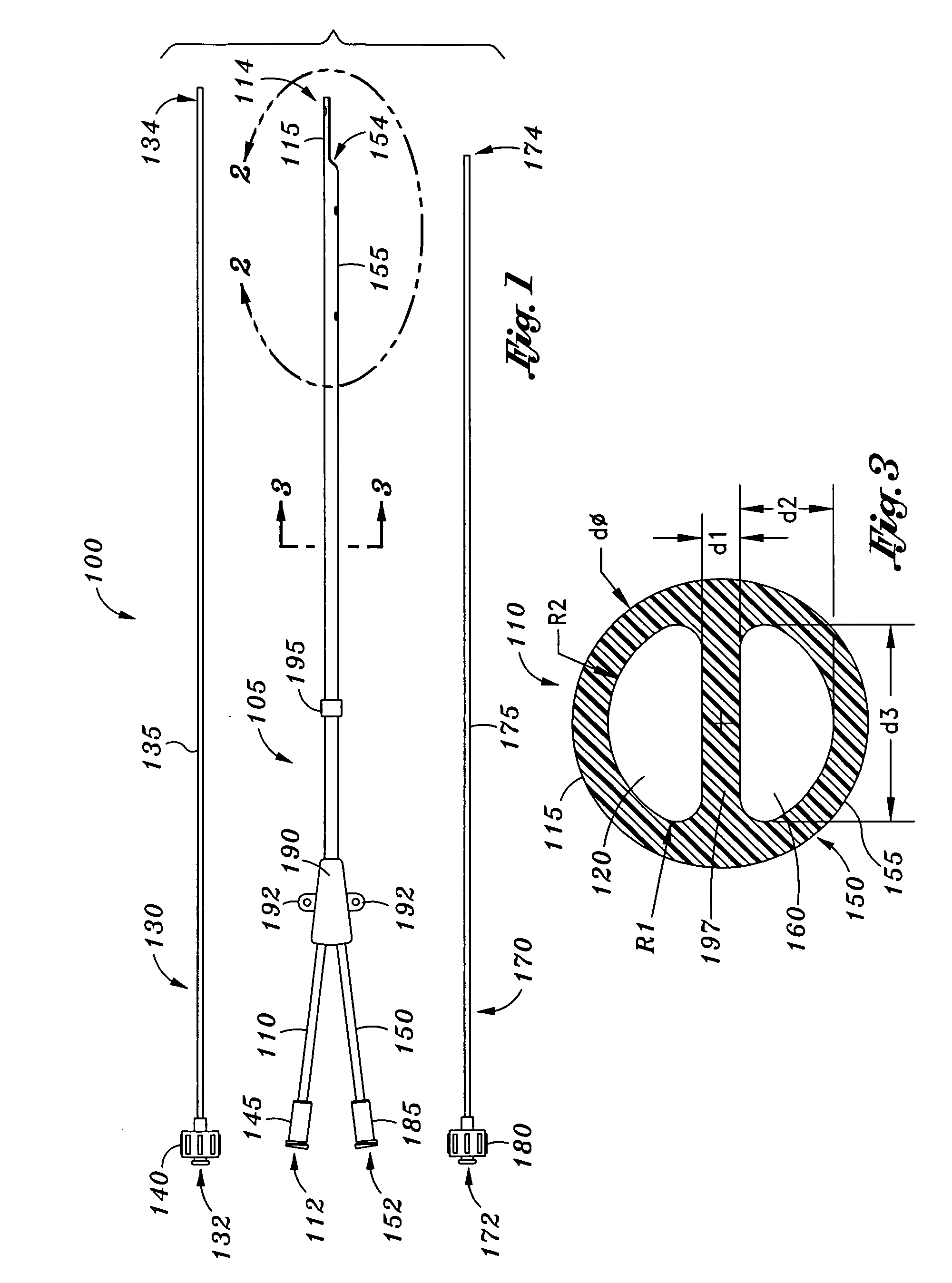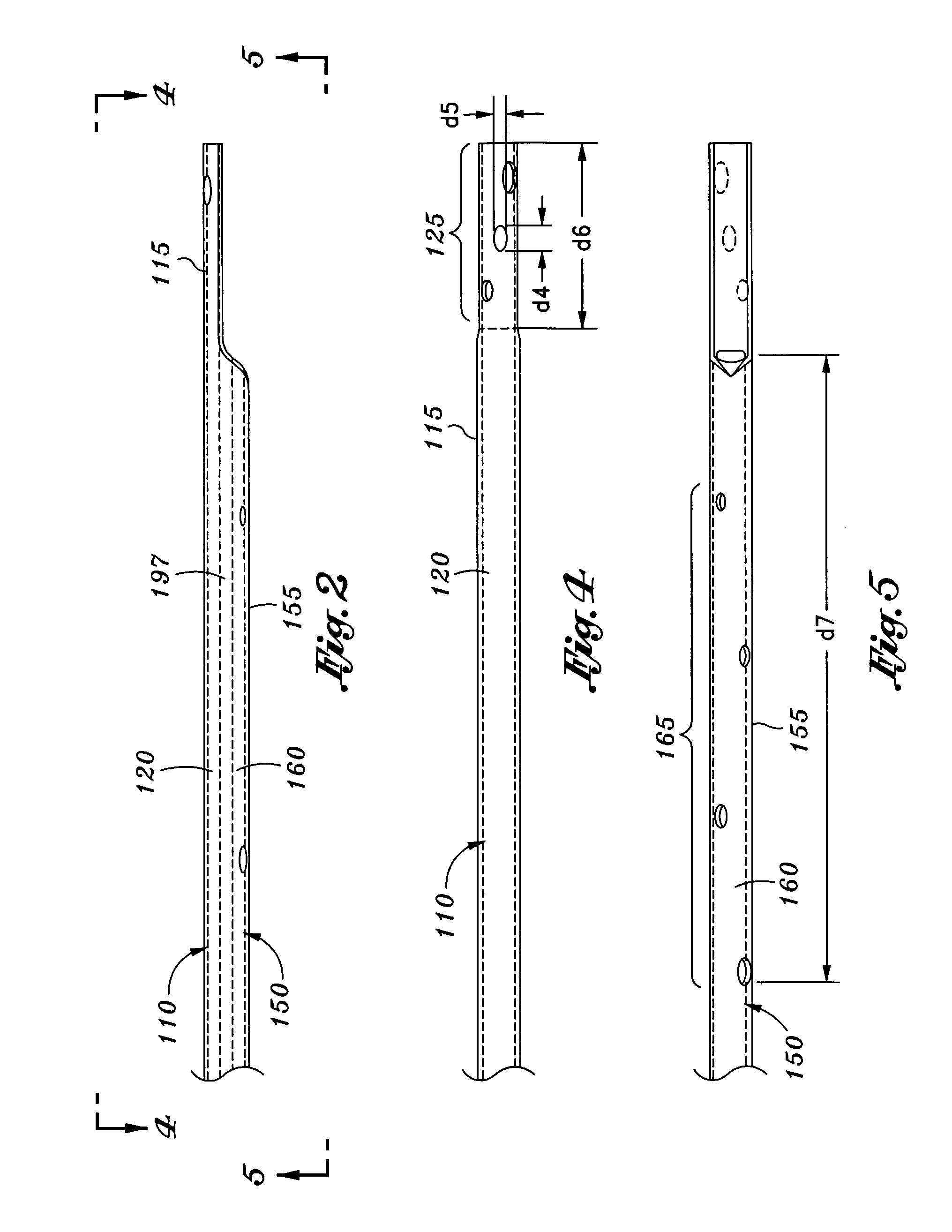Hemodialysis catheter apparatus
a catheter and hemodialysis technology, applied in the field of catheters, can solve the problems of obstructing the blood flow through the catheter during subsequent use, inconvenient catheter removal, and substantial patient discomfor
- Summary
- Abstract
- Description
- Claims
- Application Information
AI Technical Summary
Benefits of technology
Problems solved by technology
Method used
Image
Examples
Embodiment Construction
[0025]FIG. 1 is a top view of a catheter apparatus 100 for use in hemodialysis treatment in accordance with an embodiment of the present disclosure. As illustrated, the apparatus 100 can include a main body portion 105, a venous obturator 130, and an arterial obturator 170.
[0026] Turning first to the main body portion 105, an arterial conduit 150 is provided for receiving blood from a patient through one or more apertures at an open distal end 154 of the conduit 150, and passing the blood to dialysis equipment (not shown) through a proximal end 152 of the conduit 150. A venous conduit 110 is provided for receiving blood from the dialysis equipment through proximal end 112 of the conduit 110 and passing the blood back to the patient through one or more apertures at an open distal end 114 of the conduit 110. In one embodiment, conduits 110 and 150 can be implemented using transparent PVC material.
[0027] The proximal end 112 of venous conduit 110 can be provided with a venous connect...
PUM
 Login to View More
Login to View More Abstract
Description
Claims
Application Information
 Login to View More
Login to View More - R&D
- Intellectual Property
- Life Sciences
- Materials
- Tech Scout
- Unparalleled Data Quality
- Higher Quality Content
- 60% Fewer Hallucinations
Browse by: Latest US Patents, China's latest patents, Technical Efficacy Thesaurus, Application Domain, Technology Topic, Popular Technical Reports.
© 2025 PatSnap. All rights reserved.Legal|Privacy policy|Modern Slavery Act Transparency Statement|Sitemap|About US| Contact US: help@patsnap.com



